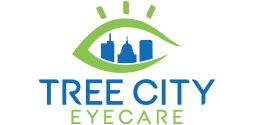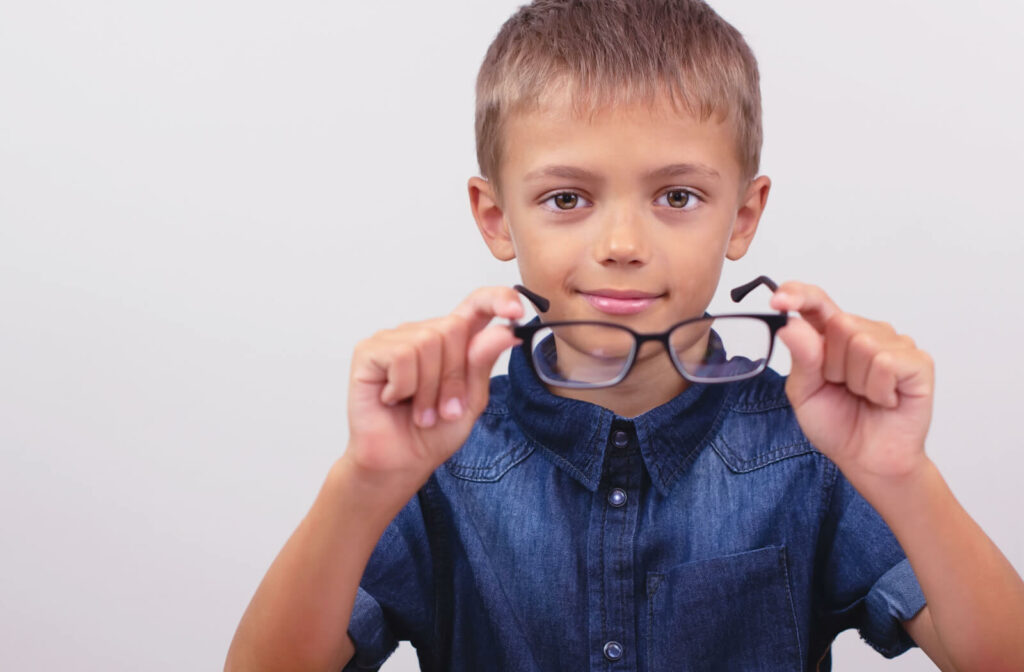Myopia, also known as nearsightedness, affects millions of people worldwide. For someone with myopia, distance objects are blurry. Close-up objects may appear clear, but look any further away than arm’s length (or sometimes closer), and things are out of focus. Not only can this create a challenging learning environment for children, myopia also increases the risk of several potentially blinding eye diseases when older.
Most people with myopia are diagnosed as a child or teenager. Once a child becomes myopic, vision often continues to deteriorate as the child ages and the eye continues to grow. The higher the amount of myopia, the greater the risk of multiple significant eye diseases. If you’re a parent of a child who has been diagnosed with myopia, you may be wondering if and how you can help.
Managing myopia while your child’s eyes are growing can help slow its progression, reducing the risk of serious eye complications in the future.
The good news is: Yes! There are various ways to slow down myopic progression and manage it over time. We’ll outline some methods further below, but if you are concerned about your child’s vision, please talk to your child’s optometrist for an assessment and guidance on the best myopia control methods for them. If you are in the Boise or surrounding areas (Meridian, Eagle, Nampa, etc), we would be happy to discuss customized options for you or your family at Tree City Eyecare.
What Causes Myopia?
Myopia is a refractive error that occurs when light rays focus in front of the retina instead of on it. This causes distant objects to appear blurry. Initially, babies are born “far-sighted” with short eyes. During childhood, kids’ eyes typically grow until they achieve normal vision. However, some children experience excessive eye growth, leading to myopia or “near-sightedness”.
Whether someone develops myopia, and to what degree, depends on multiple factors: genetics, time spent outside (or lack thereof), and extensive close work (things like reading or screen time) during crucial developmental years all play a role.
Why Does it Matter?
Even if corrected appropriately with glasses or contact lenses, myopia poses risks. While there are no safe levels of myopia, these risks are even greater in cases of high myopia (defined as −5 diopters (D) or more of near-sightedness). High myopia significantly increases the likelihood of sight-threatening diseases such as:
- Glaucoma
- Cataracts
- Retinal tears or detachment
- Myopic macular degeneration
If your child has been diagnosed with myopia, reducing how much it progresses is critical for short-term vision (think school, driving, sports) as well as for long-term eye health. By reducing the amount of myopia, we reduce risk of multiple blinding eye conditions. As Boise’s myopia control experts, we will do all we can to ensure you and your family see as well as possible for your entire life.
The Importance of Outdoor Time & Reducing Close Work
There are a few things we can do on our own to reduce the risk of developing near-sightedness, or myopia. Outdoor time is crucial for the healthy development of growing eyes. According to a 2019 peer-reviewed study on high myopia and its risks, researchers found that spending 2 hours per day outside significantly reduced the development of myopia.
Spending time outside allows children’s eyes to experience different visual stimuli, varying light intensities, and natural daylight. These things are critical for proper eye growth and development.
Additionally, excessive screen time can negatively affect your child’s eyes. It can cause eye fatigue, dryness, irritation, make it difficult to sleep and night, and seems to encourage excessive eye elongation (which leads to myopia).
At Tree City Eyecare, we recommend frequent breaks with near work (reading/screen time). Encourage kids to take a 5 minute break from their book or screen every 20 minutes and get up to walk around. If you see your child with a book or screen tucked up to their nose, encourage them to push it out a bit – 14-18 inches tends to be a good distance for most. We also recommend AT LEAST an hour per day outside – more is of course better.
Limiting indoor screen time, maintaining appropriate reading distance, and encouraging time outside is important for promoting healthy eye habits. Besides, being outside is just good for us.
Methods of Myopia Control
Sadly, once myopia is developed, the above lifestyle modifications on their own may not keep it from progressing. Some optometrists, like us at Tree City Eyecare, offer advanced myopia control methods. There’s no one-size-fits-all solution, and many children require more than one method to slow or stop their myopia progression. Working closely with your child’s optometrist, you can develop a personalized plan to address their needs. Here are the methods we use at Tree City Eyecare:
Orthokeratology
Orthokeratology, or ortho-k, uses custom gas-permeable contact lenses worn overnight to temporarily reshape the cornea to correct vision. These lenses are removed in the morning, and their corrective effect lasts through the day, allowing clear vision without needing glasses or contacts. This benefit of freedom from daytime glasses and contact lenses makes orthokeratology among the most sought-after forms of myopia control.
Ortho-k is effective in slowing the progression of myopia in children. Ortho-k lenses gently reshape the center of the cornea in a manner customized to each patient’s eye. This adjusts the eye’s focusing power and improves the ability to see distant objects clearly. This reshaping of the cornea also changes how light enters the eye in a way that slows down eye elongation, in turn reducing myopic progression.
Ortho-k lenses are safe and effective. They sometimes have a higher price point than regular contact lenses or glasses; however, the benefits of controlling myopia progression can outweigh the cost. This is especially true in children who have a higher risk of developing high myopia and associated eye diseases later in life. In addition, the freedom from daytime glasses and contact lenses can be priceless. Orthokeratology does have some limitations, as levels of myopia need to be within specific parameters to be treatable with this modality.
Soft Multi-Focal Contact Lenses
Specialty soft multifocal contact lenses are another method proven to reduce the rate of myopia progression. They are like standard soft contact lenses in the way they are applied to the eye and cared for. However, these multifocal lenses focus light differently than standard contact lenses in a way that helps slow eye elongation, reducing myopia progression.
Myopia-control soft contact lenses are safe and effective for children as young as 7. Your optometrist can help determine whether soft multifocal lenses or ortho-k might be a better option for your child.
Atropine Eye Drops
Atropine eye drops have historically been used in eyecare for various purposes, primarily for dilation of the eye or to treat ocular inflammation. Many recent studies have shown that atropine in low concentrations has also been found to reduce eye elongation without the significant side effects of dilation and blurred near vision found in typical atropine concentrations. This makes it a very popular myopia control method.
Atropine drops are very easy to use and are instilled like any eye drop. Parents apply a drop to each of their child’s eyes once a day, usually at bedtime.
Like any medication, Atropine drops may have some potential side effects, including temporary blurry vision, sensitivity to light, and difficulty with near vision. However, these side effects are usually mild and subside over time. Additionally, because concentrations are much lower when used for myopia control, these side effects are minimized compared to normal atropine doses used in eye care.
Unlike other methods of myopia control, glasses or standard contact lenses still need to be worn daily to correct vision. Atropine itself does not correct vision, but it is effective at slowing the rate of myopic progression. It is our option of choice when parents or kids would prefer to wear glasses rather than contact lenses and when prescriptions are outside the parameters correctable by orthokeratology or multifocal lenses.

Schedule Regular Eye Exams to Monitor Your Myopia Progression
Schedule regular checkups with your child’s optometrist to ensure myopia is detected early. Early detection allows a plan to be put in place as soon as possible to keep levels of near-sightedness as low as possible. Eye exams are essential to protecting your child’s vision and health. If you want more information on early detection and management of myopia, book an appointment with Tree City Eyecare today.


